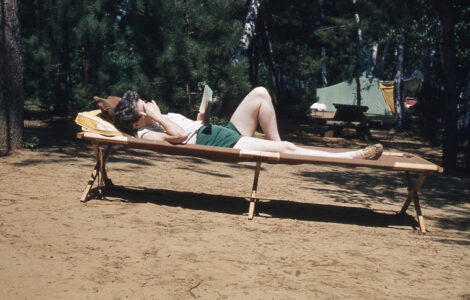When life is a dog team
I read an article in the Enterprise recently about a Bloomingdale man, Peter Reuter, who’s preparing to run the 2017 Iditarod Trail Sled Dog Race with a team of committed, athletic Alaskan huskies he’ll select from the large and diverse group of dogs he’s been working with for a number of years now. Several of the dogs have run the Iditarod before (some several times).
The Iditarod commemorates the “Great Race of Mercy,” a 1925 undertaking shouldered by 25 courageous mushers and more than 100 intrepid sled dogs (in relay) to deliver diphtheria antitoxin from Nenana (near Anchorage) to the roughly 10,000 people living in and around the village of Nome. Without treatment, the people of the region, which was under quarantine, were expected to suffer near 100-percent mortality.
While it’s true that by 1925, airplanes were becoming more widely used in Alaska as a means of transportation, freight hauling, and mail delivery, extreme weather had made it impossible for the desperately needed, life-saving antitoxin to be delivered by air. The serum had to be transported a distance of nearly 700 miles over land. The journey took five and a half days. Weather remains a critical factor in all winter aviation operations in Alaska still.
Dogsleds were once the only winter method of transportation across ice-and-snow-covered regions of the vast North American wilderness and, although they are used today primarily for tourism and in dog-racing competitions, the historic importance of the dogsled and the remarkable teams of dogs that pull the sleds, is undeniable.
It’s generally believed that the Inuit people, natives of Arctic Alaska, Canada, and Greenland, invented the first dogsleds as a means of transporting both people and cargo across the frozen tundra. They made their sleds primarily out of wood. Harnesses were made of leather. The runners were often formed from ivory or bone. Sometime in the late eighteenth or early 19th century, white explorers, most likely prospectors, began making sled-runners out of iron.
Prospectors often found themselves racing with one another across the northern frontier, each hoping to be the first to arrive and stake a claim. It’s widely believed that the origins of dogsled racing as a sport lies in this early rivalry. The first formal sporting competition, the All-Alaska Sweepstakes Race, was held in and around Nome, Alaska, in 1908. It consisted of a trail of roughly 400 miles.
Between 1880 and 1914, there were more than 30 gold rushes across Alaska — among them Juneau in 1880, the Klondike in 1896, Nome in 1898, Fairbanks in 1902, and Iditarod in 1909. Amazingly, the gold rush of 1909 brought so many people to Iditarod that, for a while, it was a city of 10,000 inhabitants, the largest city in the territory. (It’s now a deserted, forsaken, essentially inaccessible ghost-town along the Iditarod River in the Yukon-Koyukyuk area of Alaska.)
Steamboats served the gold rush districts of Alaska during the summer months. Nome even had luxury steamship service. But winter freezing made river and ocean travel and transport virtually impossible from October through May. Dog sled teams were the only practical, reliable way to move large quantities of supplies and/or numbers of people across long distances in winter. So in 1910, the federal government began construction of a winter dogsled trail from Seward to Nome.
Freight sleds were huge, capable of carrying more than a thousand pounds. The teams that used to pull them consisted of 20 dogs or more.
Pound for pound, sled dogs may well be the most powerful animals on Earth — stronger even than draft horses. Capable of exceeding speeds of twenty miles an hour in sprints and, including time spent resting, capable of maintaining speeds of eight to twelve miles an hour for hundreds of miles, they are faster than horses as well.
Native people knew this and bred dogs specifically for pulling sleds. One example, the Malamute, which gets its name from the Malemiut Inupiat people of the Seward Peninsula, remains one of the most popular species of sled dogs to this day.
Explorers, trappers and settlers once used dog teams for transportation across the vast Arctic and sub-Arctic wilderness. For more than a century, the Royal Canadian Mounted Police relied exclusively on dog teams for their patrols. Today, snowmobiles have replaced dogsled teams almost everywhere.
It’s worth noting that a native of Massena (and 2012 graduate of Cornell University), Jake Witkop, who now lives in Fairbanks, Alaska, handles sled dogs, participates in sprint racing and owns a sled-dog magazine called Mushing (www.mushing.com), which reaches 7,000 readers in 20 countries.


